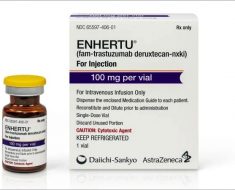Building a bridge between IT and biomedical departments would foster better security of the patient monitoring network, according to a study by a Frost & Sullivan think tank involving panelists including a senior director of digital care services from GE Healthcare.
WHY IT MATTERS
Among the key research findings, the study revealed nearly 80 percent of panelists focused on medical device maintenance in addition to other responsibilities.
In addition, all respondents agreed maintaining medical device uptime and connectivity was important, with 80 percent indicating that uptime and connectivity were extremely important.
The efforts to break down silos between the biomedical and IT departments are seen by many as a critical step in reducing the risk of patient monitoring network outages.
“The growing demand for hospital-based medical device connectivity solutions is expected to result in remarkable changes across the continuum of care,” Charlie Whelan, Frost & Sullivan’s transformational health vice president of consulting, said in a statement.
Half of respondents reported the biomedical department was responsible for maintaining medical device assets and that the patient monitoring networks fell under a shared responsibility with clinical IT departments.
Meanwhile, nearly two-thirds (60 percent) of respondents said they experienced medical device network glitches or failures on a once-a-month basis.
Panelists cited power outages as a common reason for device networks crashing, and all panelists agreed network connectivity is a critical measure of their facilities’ IT infrastructure and necessary for patient care.
The analyst firm’s virtual think tank, “Best Practices for Managing Patient Monitoring Networks Across the IT and Biomedical Departments” was an effort to better understand the successful measures hospitals were following to keep critical pieces of infrastructure functional and focused on supporting patient care.
While 60 percent of respondents said did not currently have systems or protocols in place to proactively monitor their medical device networks, all agreed proactive monitoring would help their biomed teams improve network uptime.
Tools that enable proactive could help pinpoint network failures, thereby saving trouble-shooting time and delivering faster problem resolutions.
WHAT ELSE TO KNOW
A Frost & Sullivan report from April predicted the healthcare security space is set for big growth, as hospitals recognize new vulnerabilities and vendors innovate their products and pricing models.
For health systems, the risk is that with so many access points, there is the high potential for exfiltration of data, especially those consciously or unconsciously occurring because of vulnerabilities with privileged escalation— which is administrative-level access to all kinds of vital data about patients and the organization.
The report shows that hospital IT investments in the near-term will be focused on areas such as network perimeter and endpoint protection, access management, exploit detection and mitigation and more.
Nathan Eddy is a healthcare and technology freelancer based in Berlin.
Email the writer: [email protected]
Twitter: @dropdeaded209
Healthcare IT News is a HIMSS Media publication.
Source: Read Full Article





